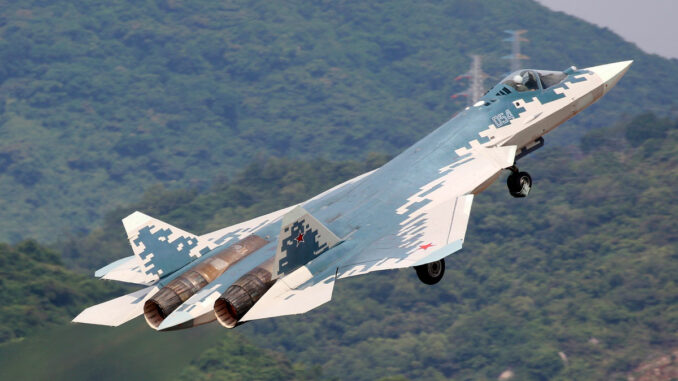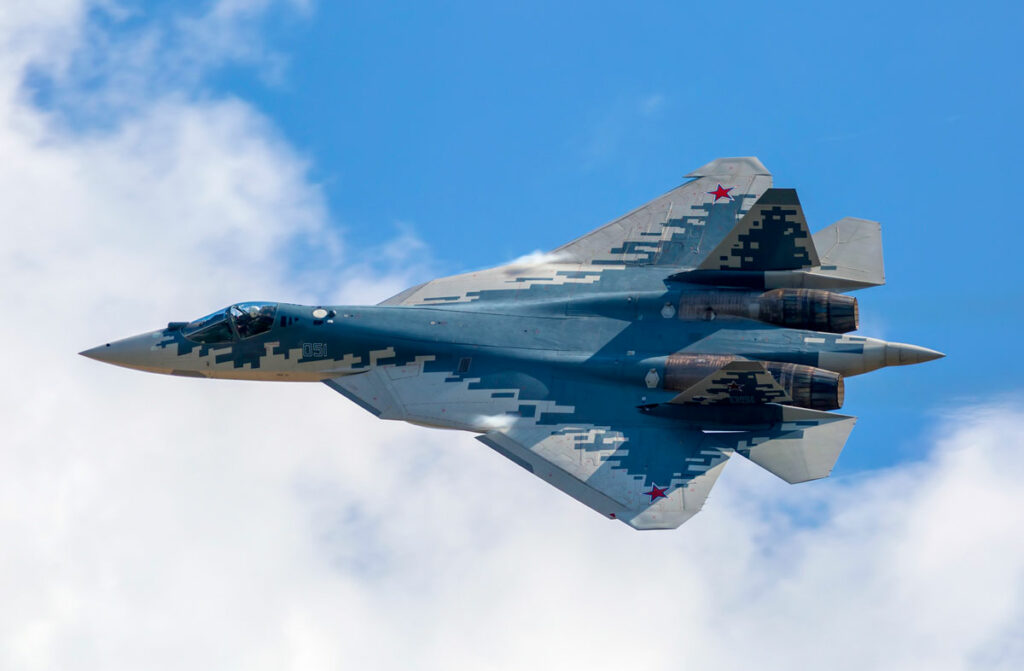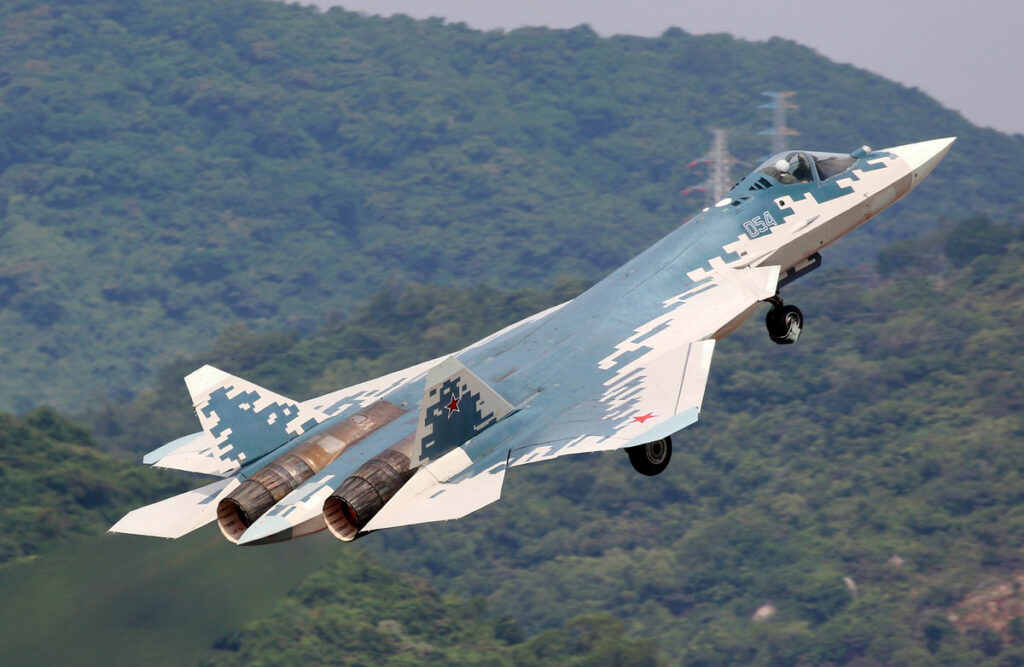
Russia’s Su-57 and Su-75 projects have been put on hold, revealing technological and economic shortcomings against a backdrop of sanctions and war in Ukraine.
The Su-57 Felon and Su-75 Checkmate programs, symbols of Russian military aviation ambitions, have come to a standstill. Since 2022, international sanctions linked to the war in Ukraine have severely limited Russia’s economic and industrial capacities, halting production after just 32 Su-57s. What’s more, the Su-75, designed as a more affordable alternative to the Su-57, never made its maiden flight. These failures, combined with the poor performance of other Russian aircraft, such as the Su-34 and Su-35, underline the deep crisis facing the Russian aeronautics sector.
The end of the Su-57: a project outstripped by its ambitions
The Su-57 Felon, launched to rival the American F-22 and F-35, is an example of an ambitious program that failed. Developed since the 1980s by Sukhoi, this 29-ton aircraft has seen only 32 prototypes and pre-production units built. The high cost, estimated at 40 million euros per unit, and performance deemed below expectations led to a lack of export orders and limited production for the Russian Air Force.
The sanctions imposed on Russia since 2022 have exacerbated the situation. Restricted access to critical technologies, notably for engines and advanced electronic systems, has crippled Sukhoi’s ability to pursue development. By comparison, the USA has produced over 850 F-35s, backed by a stable industrial base and international partners.
The failure of the Su-57 reveals structural flaws in the Russian aerospace industry. Chronic delays, uncontrolled costs and an inability to compete technologically on the international market are jeopardizing Sukhoi’s future.

The Su-75 Checkmate: a solution that never took off
The Su-75 Checkmate, presented in 2021 as a more affordable alternative to the Su-57, was supposed to offer a 26-ton stealth aircraft with competitive export capability. The project was intended to compete with the American F-35, with an announced unit cost of €25-30 million.
However, the Su-75 never got beyond the mock-up stage. Initially scheduled for a maiden flight in 2023, the program was pushed back to 2027, before being suspended in 2024 due to lack of funding and the impact of sanctions. The absence of foreign orders and the mediocre performance of other Sukhoi models, such as the Su-34 and Su-35, have reduced the Su-75’s prospects to nil.
This suspension reflects an economic reality: potential customers are now turning to more reliable alternatives, notably Western and Chinese aircraft. The Chinese J-20, for example, has attracted attention as a credible alternative, highlighting the decline of Russian influence in the military export market.
Weaknesses of other Sukhoi aircraft
The Su-34 and Su-35, Sukhoi’s main recent models, have failed to live up to expectations in Ukraine. The Su-34, designed as a tactical bomber, has suffered heavy losses against modern air defenses. With around 140 units produced, it is far from replacing the older Su-24s, around a hundred of which are still in service despite their advanced age.
The Su-35, designed for air superiority, has also shown its limitations against Western aircraft. Its limited production and disappointing combat performance make it less attractive for export. In addition, sanctions are preventing Russia from maintaining a sufficient production rate to renew its fleet.
These models also suffer from technological obsolescence. Delays in upgrading electronic systems and engines, as well as recurring maintenance problems, compromise their effectiveness in the field.

Consequences for Russian military aviation
The war in Ukraine has revealed the structural weaknesses of Russian military aviation. Unable to compete with Western models, Russia must now rethink its industrial and military strategy. The defense budget, which will represent 6% of GDP by 2024, is largely insufficient to compensate for losses and delays.
The failure of the Su-57 and Su-75 programs is also having an impact on military exports, which used to account for a significant proportion of Russian aerospace industry revenues. Traditional customers, such as India and Algeria, are now turning to Chinese or Western alternatives.
Finally, Sukhoi’s decline highlights a wider crisis in the Russian defense sector. Since the end of the Cold War, lack of structural reform and dependence on exports have weakened the industry’s competitiveness. International sanctions and the war in Ukraine are accelerating this deterioration, threatening Russia’s long-term viability as a military air power.
The discontinuation of the Su-57 and Su-75 programs marks a turning point for Russian military aviation. Unable to overcome technological and economic challenges, Russia’s influence on the global fighter aircraft market is declining. This decline, amplified by sanctions and failures in Ukraine, underlines the need for Russia to rethink its industrial and military strategy if it is to remain relevant on an international scale.
War Wings Daily is an independant magazine.